Step Inside Wang Family Courtyard: A Fascinating Tale of Tradition and Design

An Essential Guide to Visiting Wang Family Courtyard
In This Guide
- An Essential Guide to Visiting Wang Family Courtyard
- The Rich History and Legends of Wang Family Courtyard
- Main Highlights: What You Absolutely Can’t Miss
- Planning Your Visit: A Practical Guide
- Tickets: Prices, Booking, and Tips
- How to Get There: A Complete Transportation Guide
- Local Cuisine and Accommodation Nearby
- Frequently Asked Questions
- Final Thoughts on Your Trip
Nestled in the tranquil village of Jingsheng within Shanxi Province, the Wang Family Courtyard is a stunning testament to China’s rich architectural heritage and cultural history. Often referred to as the “Forbidden City of Folk Residences,” this sprawling complex sprawls across an impressive 250,000 square meters, making it the largest existing cluster of traditional residences in the country. Constructed over several decades from the mid-17th century to the early 19th century, the courtyard serves as a vivid reminder of the wealth and influence of the Wang family, who transformed from humble farmers into one of the most prominent merchant families during the Ming and Qing Dynasties.
As you step through the ornate gates of this magnificent compound, you are greeted by a labyrinth of 123 courtyards and 1,118 houses, each echoing tales of a bygone era. The exquisite craftsmanship is evident everywhere, from intricate carvings depicting mythical creatures and floral motifs to the harmonious layout that embodies the principles of feng shui. The architectural grandeur of the Gaojiaya, Red Gate Castle, and Shilv Castle stands as a celebration of not just the Wang family’s prosperity but also the artistic and cultural achievements of the time.
Visitors will find much to explore, including the serene Zishou Temple, with its vibrant murals and rich history dating back over a millennium. The compound not only serves as a museum showcasing the artistic prowess of ancient China but also offers a glimpse into the lives of its former inhabitants, making it an essential stop for anyone keen on understanding China’s historical narrative.
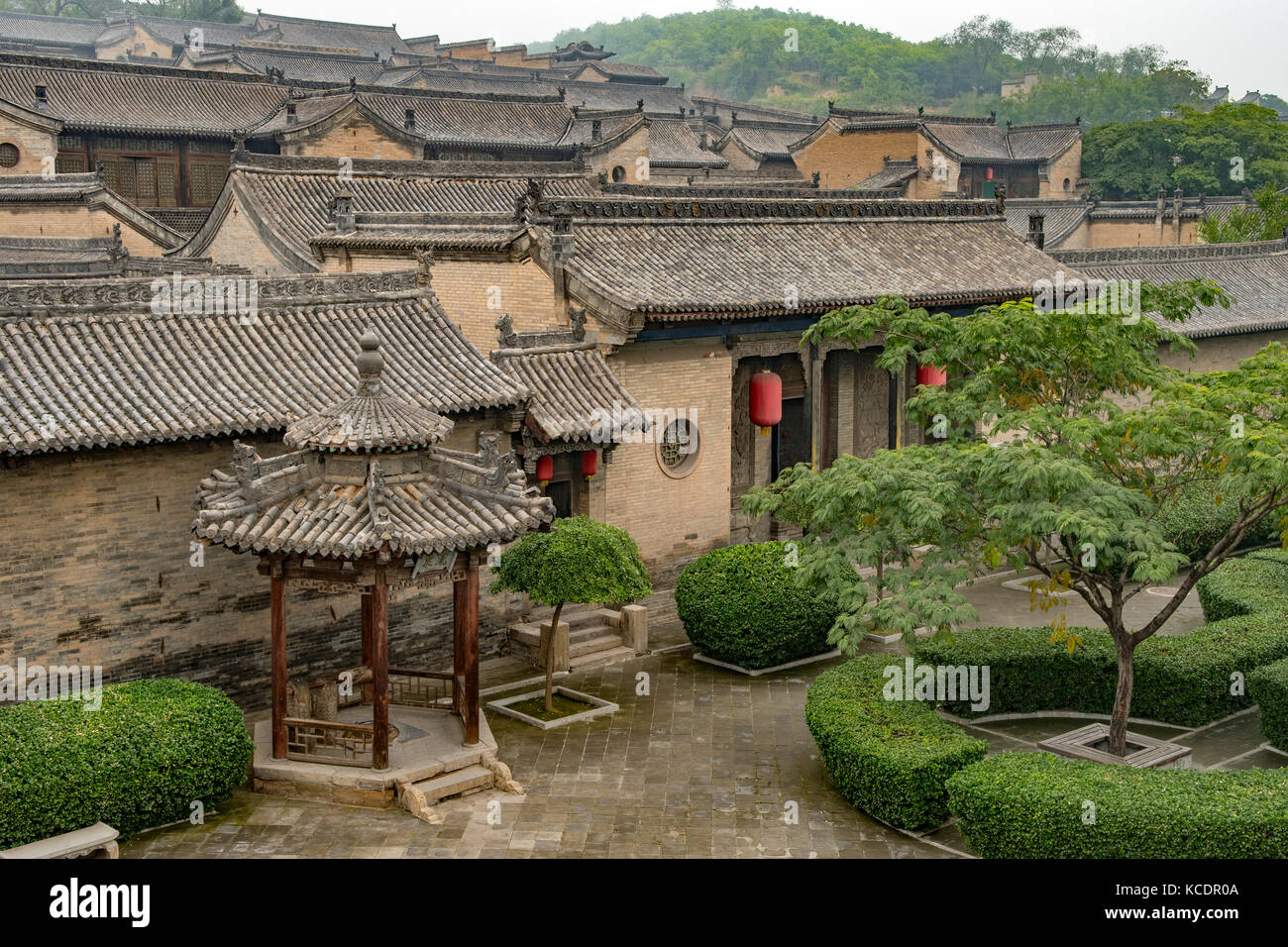
Wang Family Courtyard.
Whether you are a history enthusiast, an architecture aficionado, or simply a curious traveler, the Wang Family Courtyard promises an enriching experience that captures the essence of traditional Chinese culture. Prepare to be captivated by its beauty, history, and the stories that linger within its walls.
The Rich History and Legends of Wang Family Courtyard
A Journey Through Time: The Wang Family Courtyard
Nestled in the tranquil hills of Shanxi Province, the Wang Family Courtyard stands as a testament to the rich history and architectural grandeur of ancient China. This sprawling complex, often hailed as the “First Folk Residence in Cathay,” is not only a remarkable example of traditional Chinese architecture but also a repository of fascinating stories that echo through its many courtyards.
Historical Roots
The origins of the Wang Family can be traced back to the Yuan Dynasty (1271-1368), when they transitioned from humble farmers and tofu sellers to influential merchants and political figures. By the 17th century, the family had established its roots in Jingsheng Village, where they began constructing what would become the largest existing folk residence cluster in China. The compound’s construction spanned over five decades, culminating in the early 19th century, showcasing the family’s wealth and status during the Ming (1368-1644) and early Qing (1644-1911) dynasties.
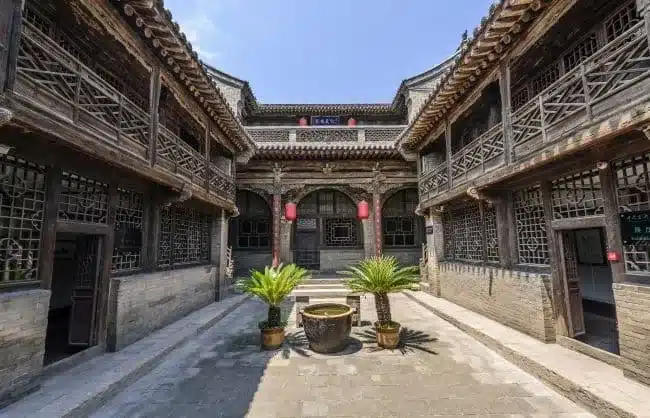
Wang Family Courtyard.
The Wang family achieved remarkable prosperity through a combination of agriculture, trade, and political connections. Their rise to prominence allowed them to undertake massive construction projects, resulting in the creation of the Wang Family Courtyard, an architectural marvel consisting of 123 courtyards and 1,118 rooms. This impressive scale reflects their ambition and the flourishing merchant culture of Shanxi Province during this period.
Architectural Significance
The courtyard is a stunning example of traditional Chinese architecture, characterized by intricate carvings and a layout that embodies Confucian principles of hierarchy and order. Each section of the complex is meticulously designed, with buildings constructed according to strict feudal hierarchies, showcasing exquisite craftsmanship in wood, brick, and stone. Visitors can marvel at the myriad of decorative carvings that narrate tales of folklore, nature, and philosophy, blending Confucian, Taoist, and Buddhist influences.
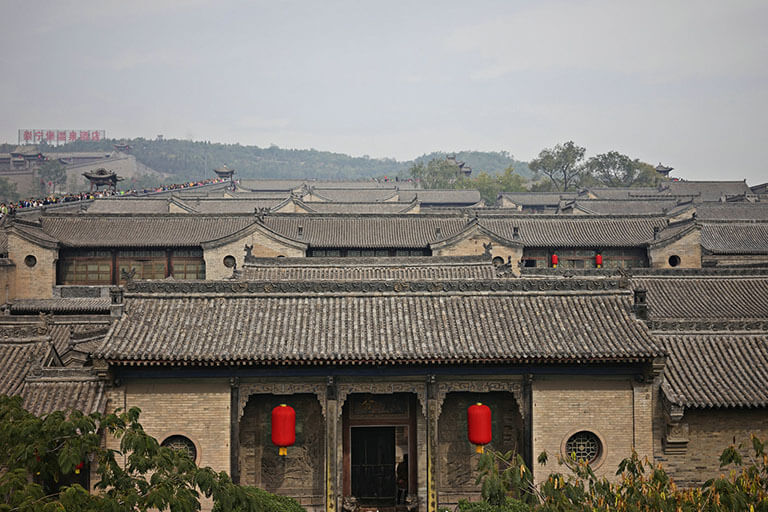
Wang Family Courtyard.
Among the architectural highlights are:
- Gaojiaya: Built between 1796 and 1811, this area features a labyrinth of courtyards, each designed for specific functions, including kitchens, servant quarters, and scholarly pursuits.
- Red Gate Castle (Hongmen Bao): Completed in 1793, this part of the complex is remarkable for its symmetrical arrangement and the distinct shape that resembles the Chinese character “王” (Wang). It houses 27 courtyards, each showcasing unique architectural styles.
- Chongning Bao: This section reflects the Ming Dynasty’s architectural style and houses an art gallery displaying works from renowned Chinese artists, further enriching the cultural significance of the compound.

Wang Family Courtyard.
Legends and Cultural Heritage
The Wang Family Courtyard is steeped in legends that add to its allure. One popular tale speaks of the legendary figures who visited the courtyard, each leaving their mark on its history. It’s said that the family hosted scholars, philosophers, and even government officials who contributed to the rich tapestry of cultural exchange within its walls.
Another legend highlights the family’s connection to fortune and prosperity. It is believed that the layout of the courtyard was designed to harness auspicious energy, ensuring that the Wang family would continue to thrive. This Feng Shui-inspired design not only reflects the family’s wealth but also their deep respect for cultural traditions.
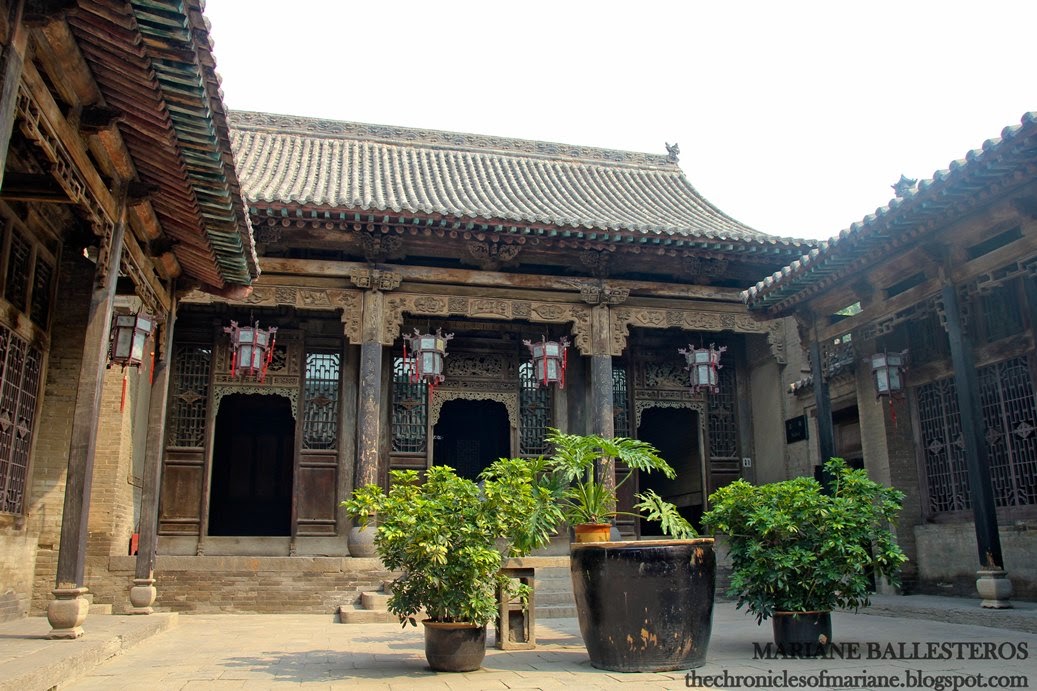
Wang Family Courtyard.
The stories of the Wang family are intertwined with the broader narrative of Chinese history, serving as a microcosm of the rise and fall of merchant families in the region. Their decline in the late Qing Dynasty mirrors the shifting tides of fortune that many families faced during this tumultuous period.
Conclusion
Visiting the Wang Family Courtyard is not merely an architectural exploration; it is an immersion into the rich history and legends of one of China’s most prominent merchant families. As you wander through its expansive courtyards, you are invited to reflect on the lives of those who once walked these grounds, their aspirations, and the legacy they left behind. The Wang Family Courtyard is a place where history, culture, and artistry converge, offering an unforgettable glimpse into the heart of Chinese heritage.
Main Highlights: What You Absolutely Can’t Miss
Unmissable Highlights of Wang Family Courtyard
Wang Family Courtyard is a monumental testament to the grandeur of ancient Chinese architecture and the rich history of the Wang family, one of the Four Large Families of the Qing Dynasty. This sprawling complex, often referred to as the “Forbidden City of Folk Residences,” spans over 250,000 square meters and boasts an impressive collection of courtyards and halls. Here are the must-see highlights that will immerse you in the cultural and historical significance of this iconic site.

Wang Family Courtyard.
1. Gaojiaya Building Complex
Constructed between 1796 and 1811, Gaojiaya is a labyrinthine cluster of courtyards that exemplifies the architectural brilliance of the Qing Dynasty. Here, you’ll find a variety of rooms, including kitchen houses and servant quarters, all designed with meticulous attention to detail. As you wander through its winding paths, you’ll be captivated by the intricate wood, stone, and brick carvings that adorn the buildings, reflecting both aesthetic beauty and profound cultural meanings.
2. Red Gate Castle (Hongmen Bao)
The Red Gate Castle, notable for its striking red entrance facing the main street, is a true architectural marvel. Completed in 1793, the castle covers 25,000 square meters and consists of 88 courtyards arranged in a layout reminiscent of the Chinese character for “Wang” (王). The symmetrical design and the interconnecting alleys enhance the castle’s enchanting allure. Don’t miss the Sima Yard and Dingjia Garden, which are prime examples of the diverse styles that characterize this impressive structure.
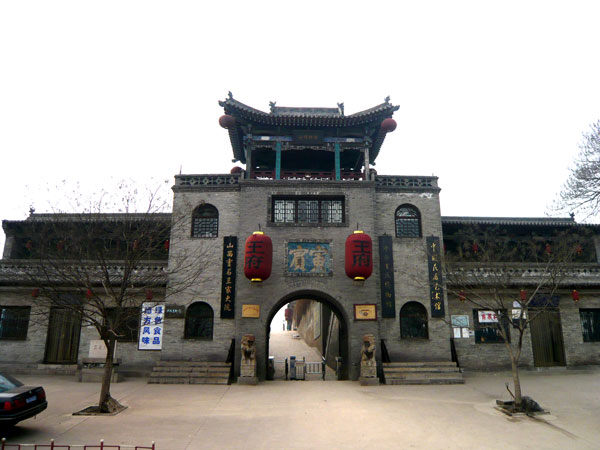
Wang Family Courtyard.
3. Shilv Castle
As one of the three castle-like buildings within the complex, Shilv Castle offers visitors a glimpse into the opulent lifestyle of the Wang family. The castle’s design blends elements of Confucianism, Taoism, and folk art, making it a cultural melting pot. The exquisite carvings throughout the castle depict a variety of themes, from nature to folklore, showcasing the exceptional craftsmanship of the artisans who created them.
4. Zishou Temple
Located just two kilometers west of the courtyard, Zishou Temple is a historical gem worth visiting. Originally built in AD 870, this temple is renowned for its stunning murals and painted sculptures from the Yuan and Ming Dynasties. Its vibrant artistic expressions provide insight into the spiritual and cultural life of the time. The temple’s caisson ceiling in the Pharmacists Buddha Hall is particularly noteworthy, exemplifying the architectural excellence of ancient China.
5. Cultural Exhibits and Art Galleries
Throughout the Wang Family Courtyard, various exhibitions showcase artifacts belonging to the Wang family, including coins, porcelain, and jade carvings. The Liqun Art Hall in Chongning Bao features a remarkable collection of artwork from the famous painter Liqun, highlighting the artistic legacy of the region. These collections not only enhance the visitor experience but also underscore the family’s significant contribution to Shanxi’s cultural heritage.
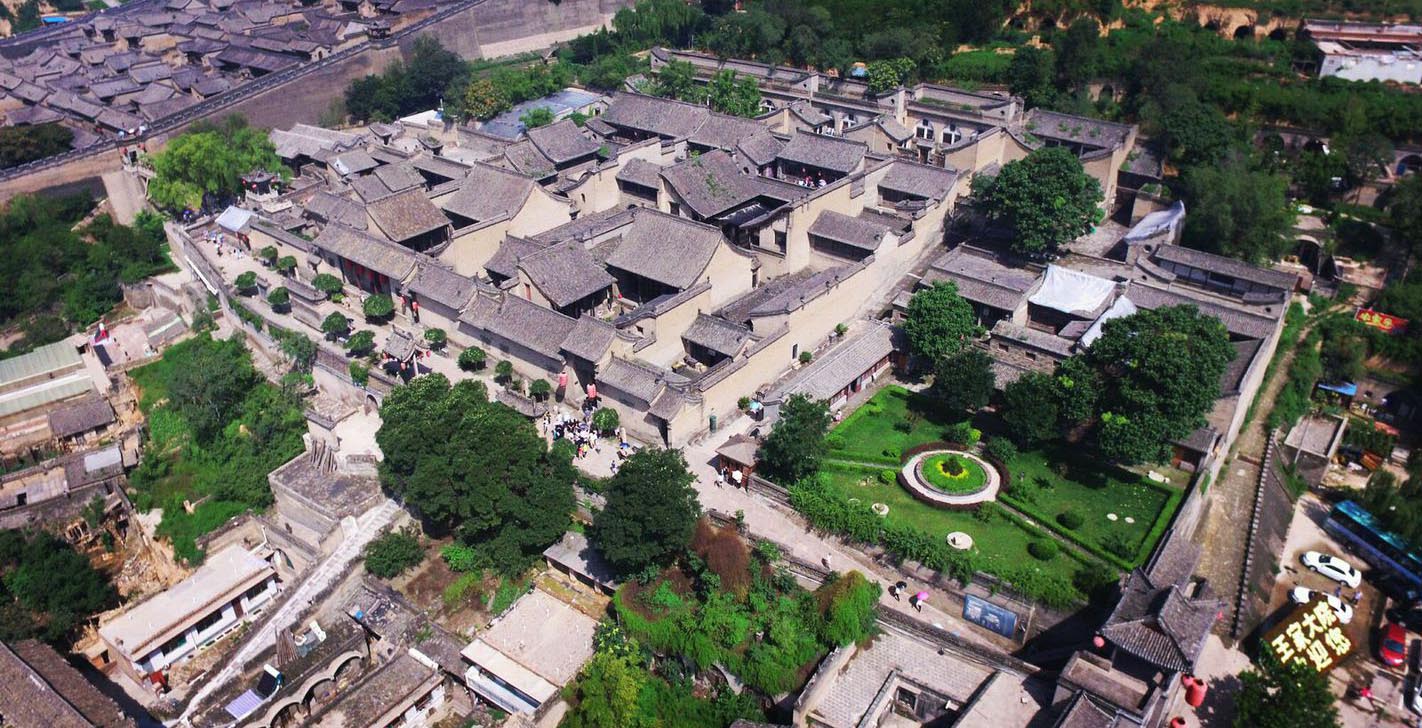
Wang Family Courtyard.
6. The Intricate Carvings
As you explore the courtyard, pay close attention to the intricate carvings that adorn every building. From floral and animal motifs to scenes from classic tales, these carvings reflect the artistic style of the Qing Dynasty and are a testament to the skilled craftsmanship that went into the construction of this magnificent residence.
Planning Your Visit
- Address: Jingsheng Village, Lingshi County, Shanxi Province, China
- Opening Hours: 8:00 AM – 6:00 PM
- Recommended Duration: Allow at least 3 hours to fully appreciate the complex.
- Entry Fee: Approximately 66 RMB (about 11 USD)
Whether you’re a history buff, an architecture enthusiast, or simply a curious traveler, the Wang Family Courtyard promises an enriching experience that transports you back to the opulent days of ancient China. Don’t miss this opportunity to witness one of China’s finest architectural treasures!
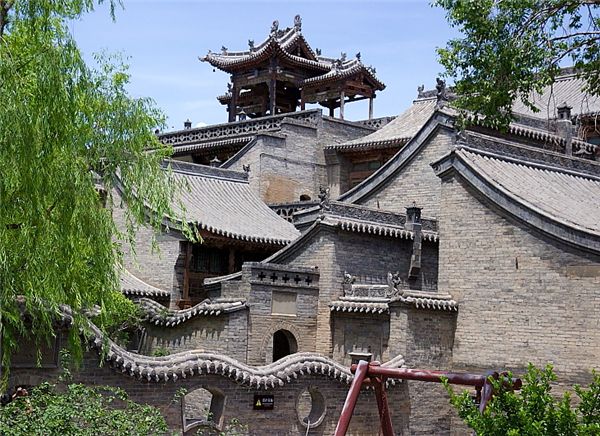
Wang Family Courtyard.
Planning Your Visit: A Practical Guide
Essential Information for Your Visit to Wang Family Courtyard
Nestled in the scenic Shanxi Province, the Wang Family Courtyard (王家大院), often referred to as a masterpiece of ancient Chinese architecture, offers international travelers a unique glimpse into the wealth and cultural heritage of a prominent merchant family. Here’s a comprehensive guide to help you plan your visit effectively.
Location and Accessibility
- Address: Jingsheng Village, Lingshi County, Shanxi Province, China
- Distance: Approximately 35 km southwest of the Ancient City of Pingyao and 150 km from Taiyuan.
Getting There:
– From Taiyuan:
– By Bus: Take a long-distance bus from Jiannan Bus Station to Lingshi Bus Stop. From there, transfer to Bus No. 1.
– By Train: Travel to Lingshi or Jiexiu Train Stations and switch to Bus No. 1 or No. 11.
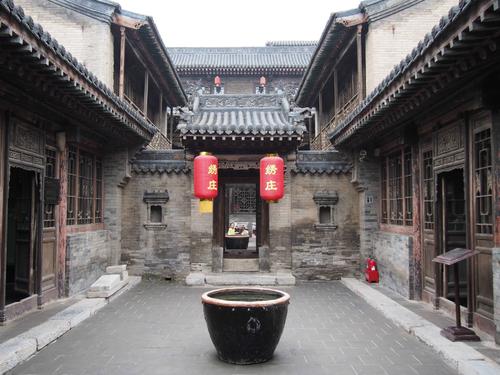
Wang Family Courtyard.
- From Pingyao:
- Regular buses depart from Pingyao Coach Station, offering a convenient way to reach the courtyard. Check the local schedule upon arrival.
Opening Hours and Admission
- Opening Hours: Daily from 8:00 AM to 6:00 PM
- Recommended Visit Duration: Allocate approximately 3 hours to explore this expansive complex.
- Admission Fee: Approximately 66 RMB (about 11 USD) per person.
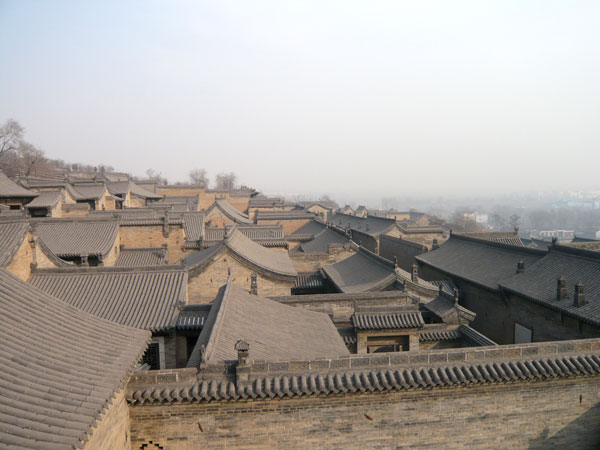
Wang Family Courtyard.
Highlights of the Wang Family Courtyard
The Wang Family Courtyard is a sprawling complex, encompassing over 250,000 square meters and featuring an impressive 231 courtyards and 2,078 houses. Here are some must-see highlights:
- Gaojiaya:
-
Constructed from 1796 to 1811, Gaojiaya is a labyrinth of courtyards containing kitchen houses, servant quarters, and a private school area. The intricate design showcases the architectural sophistication of the time.
-
Red Gate Castle (Hongmen Bao):
-
Built in 1793, this castle is distinguished by its unique layout, resembling the Chinese character “王” (Wang). With 27 courtyards of varying styles, it’s a visual treat.
-
Chongning Bao:
-
This section reflects the architectural style of the Ming Dynasty and features the Liqun Art Hall, showcasing notable artworks and collections of coins, porcelain, and jade carvings.
-
Zishou Temple:
- Located just a couple of kilometers from the courtyard, this ancient temple is renowned for its colorful murals and intricate architectural features dating back to the 9th century.
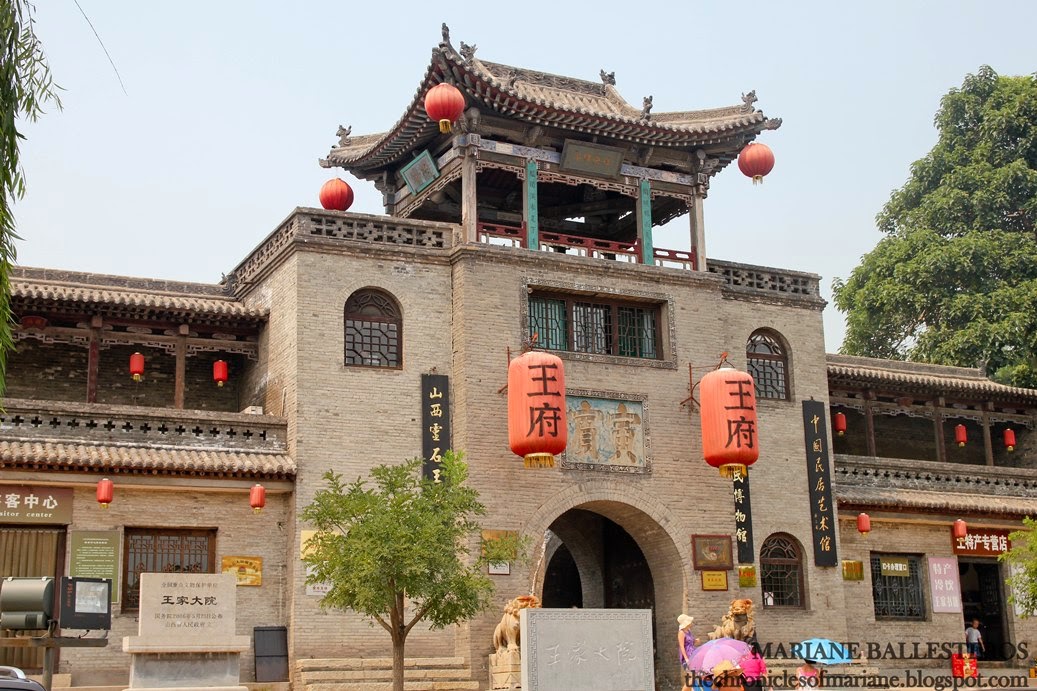
Wang Family Courtyard.
Cultural Significance
The Wang Family Courtyard is not only an architectural marvel but also a testament to the prosperity of the Wang family, one of the Four Large Families of the Qing Dynasty. The courtyard’s design integrates elements of Confucianism, Taoism, and Buddhism, showcasing the rich cultural connotations that have shaped Chinese history.
Travel Tips
- Best Time to Visit: Spring (April to June) and autumn (September to November) are ideal for pleasant weather and vibrant scenery.
- Photography: Don’t forget your camera! The intricate carvings and vast courtyards provide excellent photo opportunities.
- Guided Tours: Consider joining a guided tour for deeper insights into the history and architecture of the courtyard.
Conclusion
A visit to the Wang Family Courtyard is an unforgettable journey through time, offering a unique perspective on China’s rich history and cultural heritage. With its stunning architecture and historical significance, this site is a must-see for anyone venturing into Shanxi Province. Prepare to be mesmerized by the grandeur of this ancient residence and the stories it holds within its walls.
Tickets: Prices, Booking, and Tips
Visiting the Wang Family Courtyard is not just a journey into the architectural splendor of ancient China, but also an adventure through the rich tapestry of its history. To ensure you make the most of your visit, here’s everything you need to know about ticket prices, booking options, and helpful tips.
Ticket Prices
- General Admission: The entry fee for the Wang Family Courtyard is 66 RMB (approximately 11 USD) per person. This ticket grants you access to the beautifully preserved courtyards and the fascinating exhibitions showcasing the history and culture of the Wang family.
Booking Information
-
On-Site Purchase: Tickets can be easily purchased on-site at the entrance of the Wang Family Courtyard. It is advisable to arrive early, especially during peak tourist seasons, to avoid long queues.
-
Guided Tours: For a more enriching experience, consider joining a guided tour which often includes the entrance fee. These tours typically provide deeper insights into the history and architectural significance of the site. Booking in advance is recommended for group tours, particularly during busy travel periods.
Opening Hours
- Daily Operations: The Wang Family Courtyard is open to visitors from 8:00 AM to 6:00 PM. Plan to spend at least three hours to fully explore the complex and appreciate its intricate designs and historical artifacts.
Getting There
-
From Taiyuan: The courtyard is approximately 140 km from Taiyuan, accessible via bus or train. Regular buses run from the Jiannan Bus Station in Taiyuan to Lingshi, where you can transfer to local buses heading directly to the courtyard.
-
From Pingyao: Buses frequently depart from the Pingyao Coach Station, making it convenient to visit the courtyard as part of a broader exploration of the region.
Tips for Your Visit
-
Explore the Highlights: Make sure to visit the three main complexes—Gaojiaya, Red Gate Castle, and Chongning Bao. Each area showcases unique architectural styles and rich history that reflect the family’s prosperity over generations.
-
Photography: Don’t forget your camera! The intricate carvings and stunning courtyards provide perfect backdrops for memorable photos. However, be respectful of designated areas where photography may be restricted.
-
Cultural Etiquette: As you explore, keep in mind that this is a cultural heritage site. Maintain a respectful demeanor, especially in areas designated for quiet reflection or worship.
-
Weather Considerations: Check the weather beforehand and dress accordingly, as the courtyard is an expansive outdoor area. Comfortable walking shoes are recommended, as you’ll want to wander through the many yards and alleys.
By following these guidelines, you can immerse yourself in the grandeur of the Wang Family Courtyard and gain a deeper appreciation of its historical significance. Enjoy your journey through this remarkable testament to Chinese architectural and cultural heritage!
How to Get There: A Complete Transportation Guide
Getting to Wang Family Courtyard: Your Transportation Guide
Visiting the Wang Family Courtyard, a stunning example of ancient Chinese architecture steeped in history and culture, is made easy with various transportation options. Located in Jingsheng Village, Lingshi County, Shanxi Province, this architectural gem is a must-see for anyone interested in the rich heritage of China.
From Taiyuan
Taiyuan, the capital city of Shanxi Province, serves as the most convenient gateway to the Wang Family Courtyard. Here’s how you can make the journey:
- By Train:
- Travel Time: Approximately 2 hours.
- Route: Take a train to either Lingshi Train Station or Jiexiu Train Station.
-
Transfer: Upon arrival, catch Bus No. 1 from Lingshi Train Station or Bus No. 11 from Jiexiu Train Station directly to the Wang Family Courtyard.
-
By Bus:
- Travel Time: Roughly 2 to 2.5 hours.
- Departure Point: Jiannan Bus Station in Taiyuan.
-
Route: Board a long-distance bus to Lingshi Bus Stop. From there, transfer to Bus No. 1 to reach the courtyard. Alternatively, you can take a bus to Jiexiu Bus Station and switch to Bus No. 11.
-
By Taxi:
- Travel Time: About 1.5 hours.
- Cost: Expect to pay around 300-400 RMB (approximately $45-60), depending on traffic conditions.
From Pingyao
If you’re already in the historic city of Pingyao, getting to the Wang Family Courtyard is straightforward:
- By Bus:
- Travel Time: Approximately 1 hour.
- Departure Point: Pingyao Coach Station.
-
Details: Buses to Wang Family Courtyard run frequently, so check the schedule upon your arrival in Pingyao.
-
By Taxi:
- Travel Time: About 40 minutes.
- Cost: A taxi ride will cost around 100-150 RMB (approximately $15-23).
Travel Tips
- Best Time to Visit: The courtyard is open daily from 8:00 AM to 6:00 PM. To fully appreciate its vastness, plan to spend at least 3 hours exploring.
- Ticket Price: Entry to the Wang Family Courtyard is approximately 66 RMB (about $11 USD) per person.
- Language: While major transportation hubs may have English signage, it’s advisable to have the name of your destination written in Chinese to help with communication.
- Local Currency: Ensure you have some cash on hand for bus fares and local purchases, as not all places accept credit cards.
With this guide, you are well-equipped to embark on your journey to the Wang Family Courtyard, a destination that promises to immerse you in the architectural grandeur and cultural richness of China. Enjoy your visit!
Local Cuisine and Accommodation Nearby
As you explore the magnificent Wang Family Courtyard, a journey into the heart of Shanxi’s rich cultural history, you’ll undoubtedly work up an appetite. Fortunately, the region offers a delightful array of culinary delights and charming accommodations that will enhance your visit.
Local Cuisine
1. Pingyao Beef (平遥牛肉)
One of the must-try dishes in Pingyao is the renowned Pingyao beef. This specialty is prepared using a unique drying method and marinated with various spices, offering a tender texture and rich flavor. Enjoy it in a traditional noodle soup or as a standalone dish.
2. Shanxi Noodles (山西刀削面)
Known for their unique preparation method, Shanxi’s knife-cut noodles are a local favorite. The noodles are hand-cut and served in a savory broth, often accompanied by a variety of toppings such as minced pork, vegetables, and chilies.
3. Tofu Dishes (豆腐菜)
The Wang Family’s historical roots in the tofu business mean you’ll find exceptional tofu dishes in the area. Look for stir-fried tofu with local vegetables or tofu stews seasoned with traditional spices.
4. Vinegar (醋)
Shanxi is famous for its black vinegar, often used in dipping sauces or as a seasoning in various dishes. Be sure to try it with dumplings or as a zesty addition to your noodle soup.
5. Local Snacks
As you wander through Pingyao’s ancient streets, don’t miss out on local snacks like Yangko (扬科)—crispy, fried pastries filled with sweet or savory fillings, or Jiaozi (饺子), traditional dumplings typically served during festivals.
Recommended Restaurants
-
Pingyao Old Town Restaurant (平遥古城餐厅)
Located within the ancient city, this restaurant serves a variety of local dishes, including Pingyao beef and knife-cut noodles. The ambiance is traditional, giving you a taste of local dining culture. -
Wang Family Courtyard Restaurant (王家大院餐厅)
Situated near the courtyard, this eatery offers a range of dishes inspired by the Wang family’s heritage. Enjoy local flavors in a setting that reflects the architectural style of the area. -
Mianshan Mountain Restaurant (岚山餐厅)
If you plan to visit the nearby Mianshan Mountain, this restaurant is perfect for a meal before or after your hike. They serve hearty local dishes with stunning mountain views.
Accommodation Nearby
1. Wang Family Courtyard Inn (王家大院客栈)
For an authentic experience, consider staying at the inn located within the courtyard complex. This accommodation offers traditional decor and easy access to the historic site. Enjoy the unique opportunity to immerse yourself in the local culture right at your doorstep.
2. Pingyao Yunjin Hotel (平遥云锦酒店)
Just a short distance from the Wang Family Courtyard, this hotel combines modern comfort with traditional architecture. It features cozy rooms, a restaurant, and a peaceful garden, perfect for relaxation after a day of exploring.
3. Jingsheng Village Homestays (静生村民宿)
Experience the warmth of local hospitality by opting for a homestay in Jingsheng Village. This option not only provides comfortable accommodations but also gives you a chance to enjoy home-cooked meals and engage with local families.
4. Pingyao Harmony Hotel (平遥和谐酒店)
Located in the heart of Pingyao, this hotel offers comfortable rooms and modern amenities. It’s an excellent choice for travelers looking for convenience and access to nearby attractions.
Conclusion
Your visit to the Wang Family Courtyard will be enriched by the local flavors and accommodations that Shanxi has to offer. Whether you savor the unique dishes at a local restaurant or rest your head in a traditional inn, each experience will deepen your appreciation for the region’s historical and cultural tapestry.
Frequently Asked Questions
Frequently Asked Questions about Wang Family Courtyard
1. Where is Wang Family Courtyard located?
Wang Family Courtyard is situated in Jingsheng Village, Lingshi County, Shanxi Province, approximately 35 km southwest of the Ancient City of Pingyao and about 150 km from Taiyuan.
2. What are the opening hours?
The site is open daily from 8:00 AM to 6:00 PM. It is advisable to plan your visit accordingly to make the most of your time exploring this vast complex.
3. How much time should I allocate for my visit?
We recommend spending at least 3 hours at Wang Family Courtyard to fully appreciate its architectural beauty and historical significance.
4. What is the admission fee?
The ticket price for entering Wang Family Courtyard is 66 RMB (approximately 11 USD) per person. This fee grants you access to various sections of the complex.
5. How can I get to Wang Family Courtyard from Pingyao or Taiyuan?
– From Pingyao: There are several buses that depart daily from the Pingyao Coach Station to Wang Family Courtyard. Check the schedule upon your arrival for the latest information.
– From Taiyuan: You can travel by long-distance bus from Jiannan Bus Station to Lingshi or Jiexiu. Alternatively, trains to Lingshi Train Station or Jiexiu Train Station are also options, where you can then take local buses to reach the courtyard.
6. What are the main highlights to see inside the courtyard?
The Wang Family Courtyard is vast, but some must-see highlights include:
– Gaojiaya: A complex of courtyards renowned for its intricate architecture.
– Red Gate Castle: Notable for its unique design, resembling the Chinese character for “Wang” (王).
– Shilv Castle: Another architectural gem showcasing the family’s wealth and influence.
– Zishou Temple: Known for its historical murals and sculptures, located just a short distance away.
7. Is there any historical significance to the Wang Family?
Yes, the Wang Family has a rich history that dates back to the Yuan Dynasty. Initially farmers and bean curd sellers, they rose to prominence in business and politics, particularly during the Ming and early Qing Dynasties. Wang Family Courtyard itself is a testament to their wealth and influence, showcasing traditional Chinese architectural artistry.
8. Are there any nearby attractions worth visiting?
Absolutely! When visiting Wang Family Courtyard, consider exploring the following nearby sites:
– Pingyao Ancient City: A UNESCO World Heritage site known for its well-preserved ancient architecture.
– Qiao Family Courtyard: Another impressive courtyard showcasing traditional Shanxi architecture.
– Zhangbi Ancient Castle: A fascinating historical site with ancient fortifications and tunnels.
Whether you’re a history enthusiast or an admirer of architectural beauty, Wang Family Courtyard promises an enriching experience that offers a glimpse into China’s storied past.
Final Thoughts on Your Trip
As your journey through the majestic Wang Family Courtyard comes to a close, take a moment to reflect on the profound tapestry of history and culture that envelops this remarkable site. This architectural marvel not only stands as a testament to the wealth and influence of the Wang family during the Ming and Qing Dynasties but also serves as a vivid illustration of traditional Chinese craftsmanship and artistic expression.
A Living Legacy
Walking through its 231 courtyards and over 2,000 rooms, you are invited to engage with the stories of generations past—stories of ambition, resilience, and artistry. Each corner of this sprawling complex reveals exquisite carvings and intricate designs that breathe life into the walls, echoing the values of Confucianism, Taoism, and Buddhism. You’ve traversed a space where history is not merely preserved but is vibrantly alive, a place where every step resonates with the echoes of the past.
Must-See Highlights
As you depart, don’t forget to revisit the highlights that have made your visit unforgettable:
– Gaojiaya: A maze of courtyards filled with the remnants of daily life from centuries ago.
– Red Gate Castle: A stunning representation of the architectural genius that flourished during the Qing Dynasty.
– Zishou Temple: A sanctuary of spiritual and artistic significance, showcasing murals that have withstood the test of time.
Final Thoughts
In conclusion, the Wang Family Courtyard is more than just a destination; it is a journey into the heart of Chinese history and culture. As you leave this enchanting compound, carry with you the stories, the artistry, and the spirit of the Wang family. Whether you are an architecture enthusiast, a history buff, or simply a curious traveler, this extraordinary site promises to linger in your memory long after your visit.
So, as the saying goes, “You may have no interest in visiting any other courtyards when you return from the Wang family courtyard.” Only you can decide if that holds true, but one thing is certain: your experience here will enrich your understanding of China’s rich cultural heritage. Safe travels, and may your future explorations be equally inspiring!